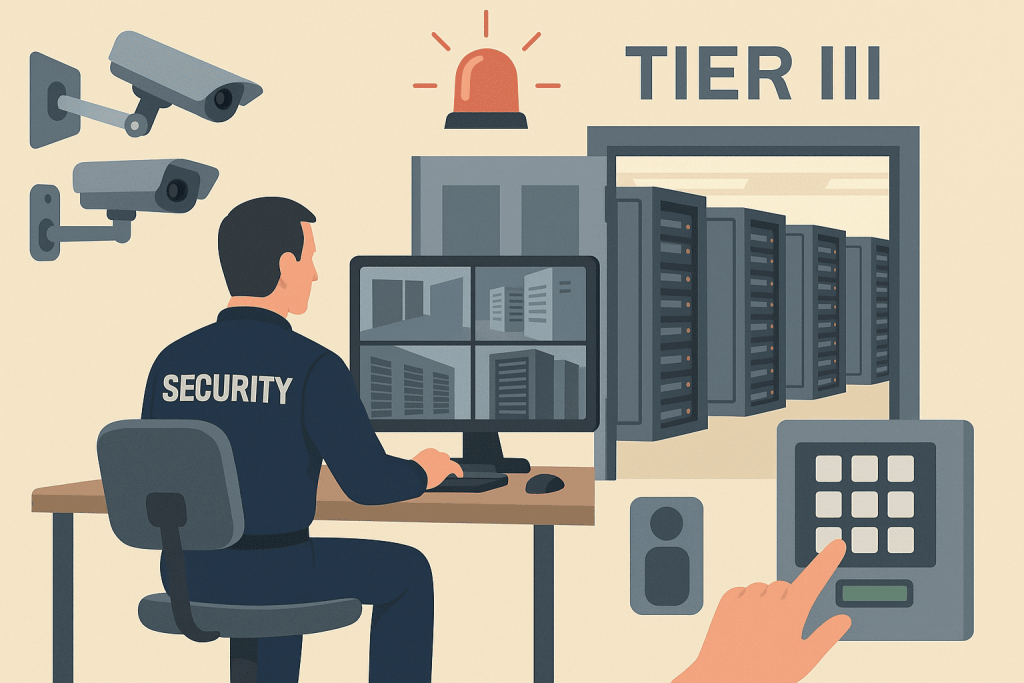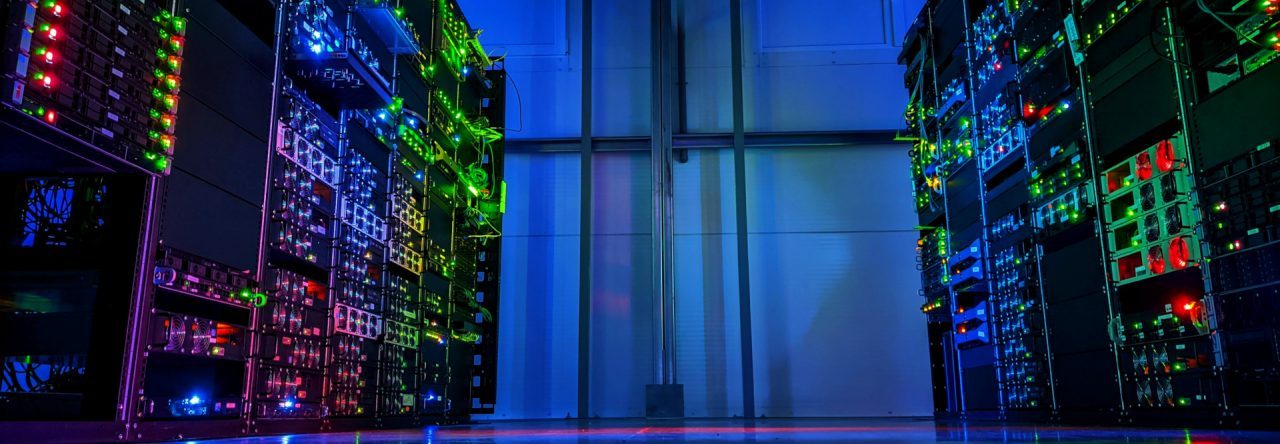
Modern data centers store valuable data and support online services, making physical security just as important as digital protection. Even the most advanced cybersecurity systems are powerless if an intruder can access the server room or if a fire damages the equipment. In high-class facilities like Tier III data centers, physical protection is a top priority—since uptime and data safety directly depend on it.
Tier III is one of the highest reliability standards for data centers (with almost continuous equipment operation). Achieving this level is only possible by combining redundancy of all critical systems with strong security measures. Server.UA operates in accordance with Tier III requirements, implementing a comprehensive physical security system that includes multi-level access control, 24/7 monitoring, and redundancy of key systems.
Comparison of Physical Security in Tier II, Tier III, and Tier IV
Tier II. A data center with basic system redundancy. Physical security at this level typically includes standard measures: locked rooms with restricted access, alarm systems, and basic video surveillance. Round-the-clock security is usually absent, and the facility is divided into a minimal number of access zones.
Tier III. A highly reliable data center with full redundancy (N+1) and the ability to perform maintenance without downtime. Physical protection here is comprehensive: 24/7 security staff and monitoring, multiple access control layers (perimeter security, controlled building entry, separate protected server rooms). The entire area is under constant video surveillance. Employees and visitors access the facility using electronic passes, often combined with two-factor or biometric verification.
Tier IV. The highest level of data center reliability with full fault tolerance (2N). Physical protection is enforced at the strictest level: multi-stage identity checks with mandatory biometrics, and only specifically authorized specialists can enter critical zones. The complex architecture is reinforced and segmented to withstand extreme situations (e.g., attacks or natural disasters). Such facilities are typically chosen by banks, government agencies, and organizations requiring maximum protection.
Biometric Identification
One of the most reliable methods of access control is biometric identification—verifying identity through unique physical traits. Instead of traditional keys or cards, an employee can scan their fingerprint or undergo an iris scan to confirm their identity. This eliminates the risk of stolen passes: even if a card is lost, no outsider can use it without the matching biometric data. In Tier III and IV data centers, biometrics are often part of a multi-layered security system—for example, an employee first presents their card and then confirms access with a fingerprint or other biometric factor.
Video Analytics
Modern data centers are equipped with smart cameras that not only record video but also analyze footage automatically. Facial recognition allows the system to identify employees and detect unauthorized individuals in real time—if someone not in the database appears on screen, security receives an alert. Anomaly detection is also used: AI software monitors unusual activity (such as movement in a restricted area at night or two people attempting to pass with one card). This enhances surveillance efficiency, as the system instantly reports threats and security staff can respond quickly.
Advanced Gas Fire Suppression Systems
In Tier III and higher facilities, gas-based fire suppression systems are used instead of traditional sprinklers. Sensitive smoke detectors identify ignition at an early stage, triggering an automated release of special gas. Within seconds, the fire is extinguished—without damaging electronics, since no water is involved.
These systems may use inert gas mixtures (such as nitrogen-based) or special chemical agents like FM-200 or Novec 1230. They do not support combustion and leave no residue. Before release, the system issues an alarm so people can safely evacuate, as high gas concentrations can be harmful to breathing. For equipment, however, gas fire suppression is ideal: servers remain dry and can continue operating immediately after ventilation.
Automated Security Gates
In many modern data centers, access to critical zones is secured by automated mantraps (dual-door entry systems). A person enters through the first door, which closes behind them before the second door opens to the inner zone. The system ensures only one person is inside at a time, preventing tailgating. Access requires authorization (card swipe, code entry, or biometric check). If conditions are not met or sensors detect two people, entry is blocked. Such gates significantly enhance security while keeping authorized personnel flow efficient.
Other Engineering Security Measures
- Perimeter security: protective fencing, motion sensors, perimeter cameras, and controlled vehicle entry through barriers or guard checkpoints.
- Reinforced building design: solid walls without windows in critical areas, fire-resistant partitions, armored doors, and locks to prevent unauthorized entry.
- Zone segmentation: dividing the facility into separate access zones (administrative areas, server halls, engineering rooms). Each zone requires individual permission, limiting intruders even if they breach one area.
- Security redundancy: duplication of all key security systems. For example, video cameras and door controllers have backup power, while alarm systems use redundant communication channels.
- 24/7 monitoring: a security operations center continuously monitors cameras and sensors, ready to dispatch response teams or emergency services immediately in case of incidents.
Conclusion
Physical security is an integral part of data center reliability. The higher the Tier level, the more layers of protection are implemented—from the perimeter down to each server rack. In Tier III, a combination of all these measures—biometrics, video analytics, fire suppression, automated gates, and system redundancy—creates a multi-layered barrier that is nearly impossible to bypass unnoticed. By hosting servers in a Server.UA data center, businesses can be confident that their data is physically secured at the highest level, ensuring not only service continuity but also peace of mind.

Leave a Reply